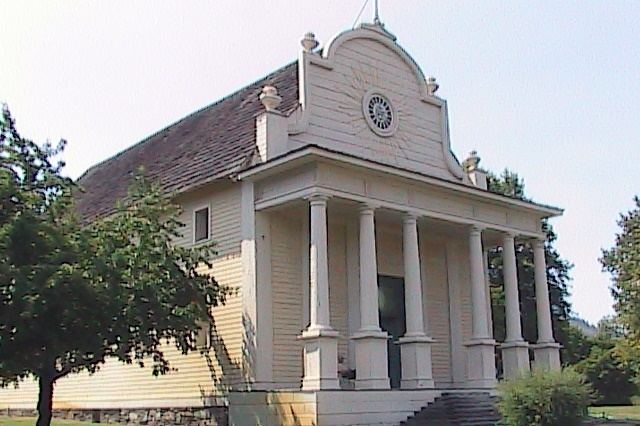Designated NHL July 4, 1961 Year built 1848 Added to NRHP 15 October 1966 | NRHP Reference # 66000312 Area 9 ha Phone +1 208-682-3814 | |
 | ||
Architectural style Greek Revival, Colonial, Other Hours Open today · 9AM–5PMThursday9AM–5PMFriday9AM–5PMSaturday9AM–5PMSunday9AM–5PMMonday9AM–5PMTuesday9AM–5PMWednesday9AM–5PMSuggest an edit Similar Farragut State Park, Land of the Yankee Fork Stat, Lake Coeur d'Alene, Dworshak State Park, Massacre Rocks State Park Profiles | ||
Old mission state park cataldo
The Silver Valley's Old Mission State Park is a state park and National Historic Landmark in North Idaho, USA. It is also known as the Mission of the Sacred Heart or Cataldo Mission. It contains the church itself, the parish house, and the surrounding property. Built 1850-53, Mission of the Sacred Heart is the oldest standing building in Idaho.
Contents
- Old mission state park cataldo
- Cataldo mission old mission state park
- HistoryEdit
- ChurchEdit
- Parish houseEdit
- Surrounding areaEdit
- References
Cataldo mission old mission state park
HistoryEdit
In the early 19th century, the Coeur d'Alene Indians had heard of these powerful "medicine men" in black robes with a book and wanted some of these men for their own tribe. They sent men east to St. Louis, and in 1842 Father Pierre-Jean De Smet responded to the request and came to the area. Fr. Nicholas Point and Br. Charles Duet came and helped to pick a mission location. The first was along the St. Joe River, but was subject to flooding. In 1846 they moved it to the current location.
In 1850 the church was taken over by Italian Jesuit missionary Antonio Ravalli, who began designing the new mission building. He made sure that the building was constructed by the Indians themselves, so that they could feel part of the church. It was built using the wattle and daub method, and finished some three years later without using a single nail.
The mission is named after Giuseppe Cataldo, a Sicilian priest born in the village of Terrasini, who spent most of his life in the frontier community.
In time the mission became an important stop for traders, settlers, and miners taking on the role as a hospitality and supply station. It was also a working port for boats heading up the Coeur d'Alene River.
In 1961 it was designated a National Historic Landmark, and in 1966 it was put on the National Register of Historic Places.
ChurchEdit
Though they had few materials to decorate the church, they used ingenious techniques to beautify it. The walls were decorated with fabric bought from the Hudson's Bay Company and hand-painted newspaper that Fr. Ravalli had received in the mail. Tin cans were used to create an idea of chandeliers. Both wooden statues were carved by hand with nothing but a knife. The blue coloring of the interior wood is not paint but a stain created by pressing local huckleberries into the wood.
Parish houseEdit
After being burnt down, it was rebuilt in 1887. It is a two-story building, the upstairs used for sleeping quarters, and the downstairs for daily activities. It contains a smaller chapel, mostly used for daily mass.
Surrounding areaEdit
The surrounding property has two cemeteries, a nature trail, and a visitor's center.
